Wolford Chapel & John Graves Simcoe – A Piece of Canadian History in Devon
Written by Jaillan Yehia
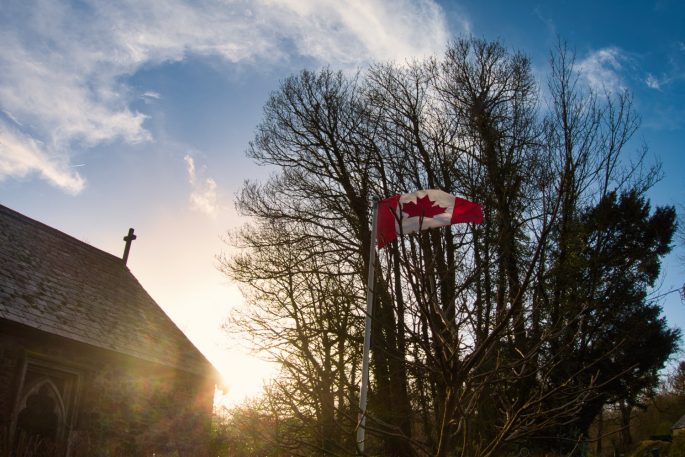
Wolford Chapel – burial place of John Graves Simcoe
The last thing you’d expect to stumble upon while driving through the remote English county of Devon, is a slice of Ontario, but that’s just what you’ll find at Wolford Chapel.
This small chapel and its grounds, tucked away off an unassuming British B road, is technically part of Canada, and flies the Canadian flag proudly to prove it.
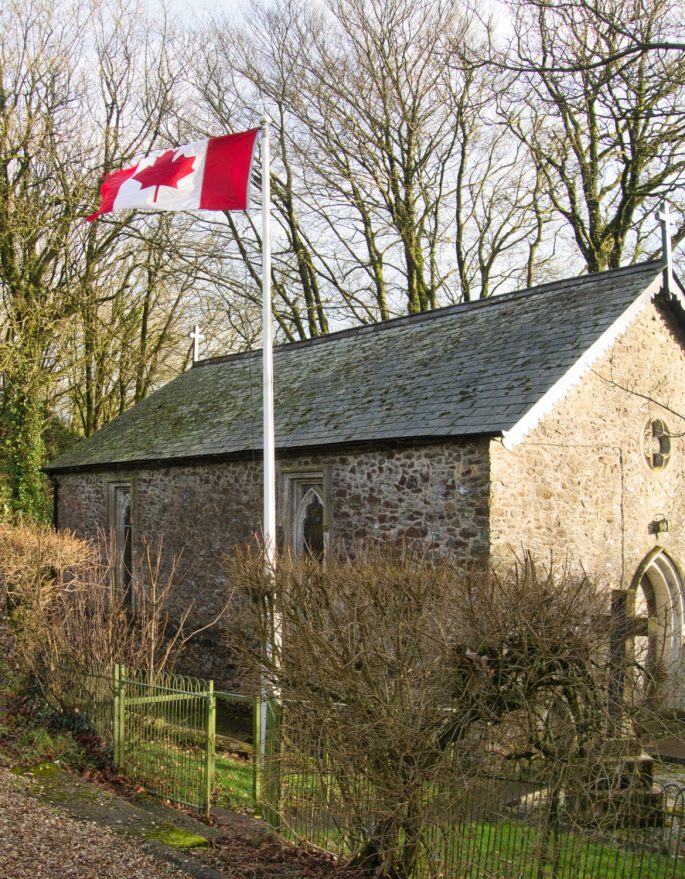
Wolford Chapel’s exterior
That’s because Wolford Chapel is the burial place of John Graves Simcoe, the famed first Lieutenant Governor of Upper Canada (now the Province of Ontario) and the founder of the city of Toronto.
After his time establishing the in Canada John Graves Simcoe died in Exeter, England in 1806 and is buried at Wolford Chapel. The chapel is also the final resting place of Simcoe’s wife Elizabeth, and six of their 11 children.
What Does This Post Cover?
Wolford Chapel & Canadian History
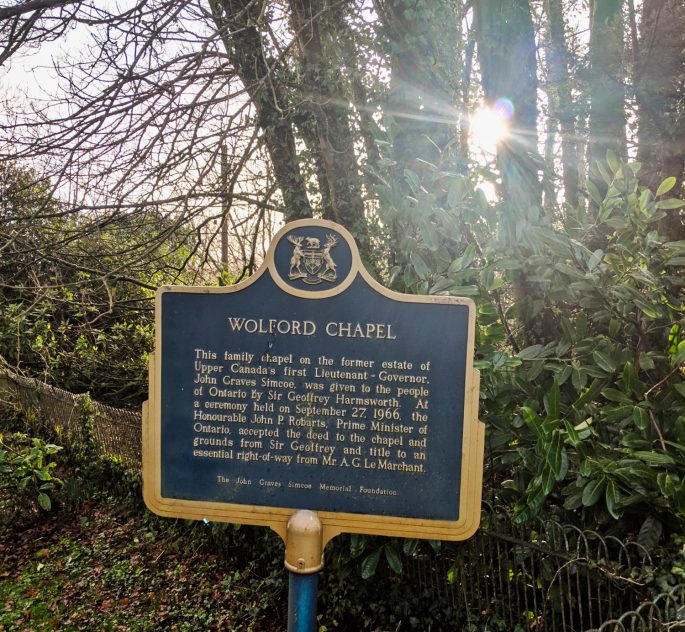
Wolford Chapel is commemorated with a plaque just like Ontario’s other cultural heritage sites
Wolford Chapel was built for family worship here at John Graves Simcoe’s former estate in Devon but is now owned entirely by the people of Ontario.
In fact Wolford Chapel is classed as a key Canadian heritage site along with other significant locations within Canada, such as Uncle Tom’s Cabin.
Wolford Chapel is the only Ontario Heritage Trust site to exist outside of Canada itself, such is the importance of John Graves Simcoe to the history of the province.
About John Graves Simcoe
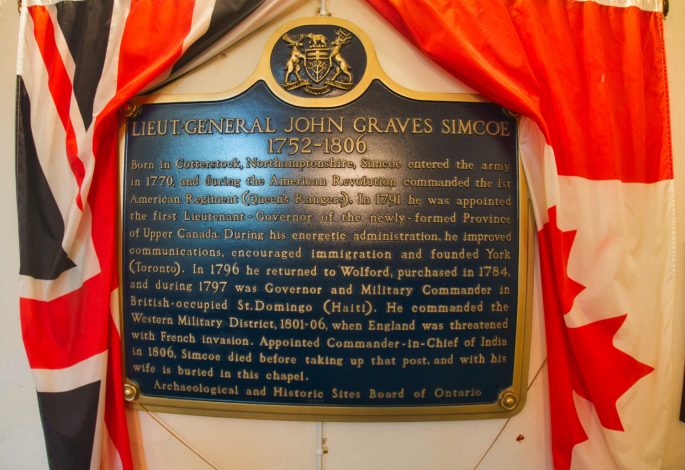
John Graves Simcoe Plaque at Wolford Chapel
Born in 1752, John Graves Simcoe lost his father, a Naval Captain, whilst on a voyage to Quebec.
After schooling in Exeter, Eton and Oxford he entered the military in 1770 and by 1775 he was in North America, on a commission in Boston.
Here he successfully commanded the Queen’s Rangers (1st American Regiment) during the American Revolution but returned to the UK in 1781 after surviving 3 months as a prisoner during the war.
Legend has it that during his time in the US he saved the life of George Washington by ordering his troops not to fire, which if true means John Graves Simcoe changed the course of world events in more ways than one.
While back in England he married Elizabeth Posthuma Gwillim and along with the heiress bought an estate near Honiton, which they built on and improved including the creation of Wolford Chapel.
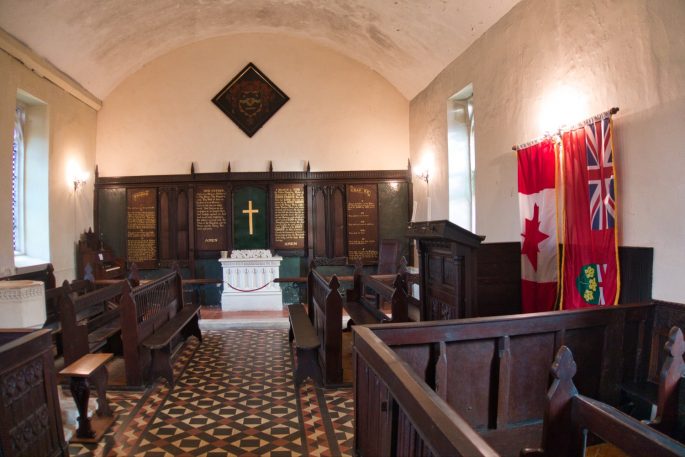
The altar at Wolford Chapel
The chapel remained in the family’s possession until the 1920’s and the entire site along with the collection of antiques within the chapel were donated to the people of Ontario in 1966.
At this time ornamental lighting featuring the floral emblem of Ontario, the trillium, was added to the interior of Wolford Chapel.
John Graves Simcoe’s Time in Canada
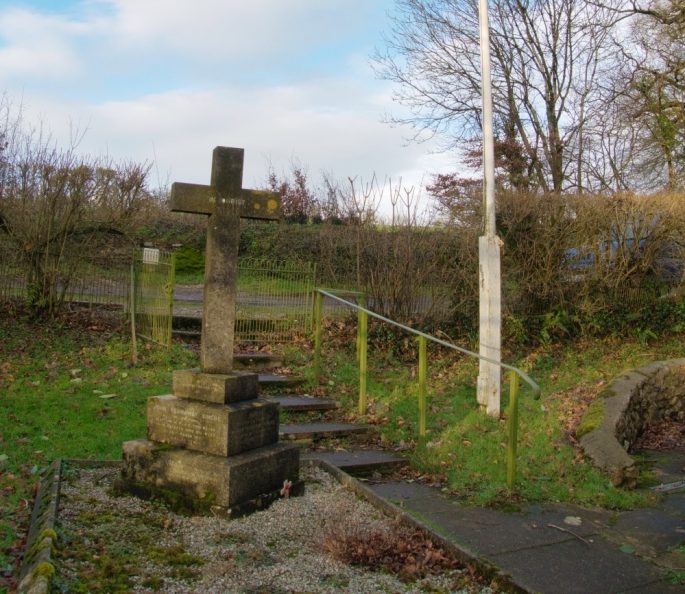
John Graves Simcoe’s burial place
With his prior knowledge of North America John Graves Simcoe was appointed the first Lieutenant Governor of Upper Canada in 1791. He is credited with establishing basic infrastructure like government and law courts as well as towns and roads in what was then York, and later became Canada’s biggest city: Toronto.
John Graves Simcoe and his wife Elizabeth were pioneers in many ways. They departed an upper class existence in England’s West Country for what was then a wilderness, where they lived in tents with no running water on Toronto’s waterfront, and endured brutal weather and difficult conditions.
Simcoe’s Christian faith led him to abolish slavery in Upper Canada in 1793 – well before it was abolished by Britain in 1833.
Simcoe Day is still celebrated annually in Toronto on the first Monday in August, in honour of John Graves Simcoe, the father of the city. Today you can find reminders of Simcoe throughout Toronto, in places like Simcoe Street and Lake Simcoe.
The Contribution of Elizabeth Simcoe
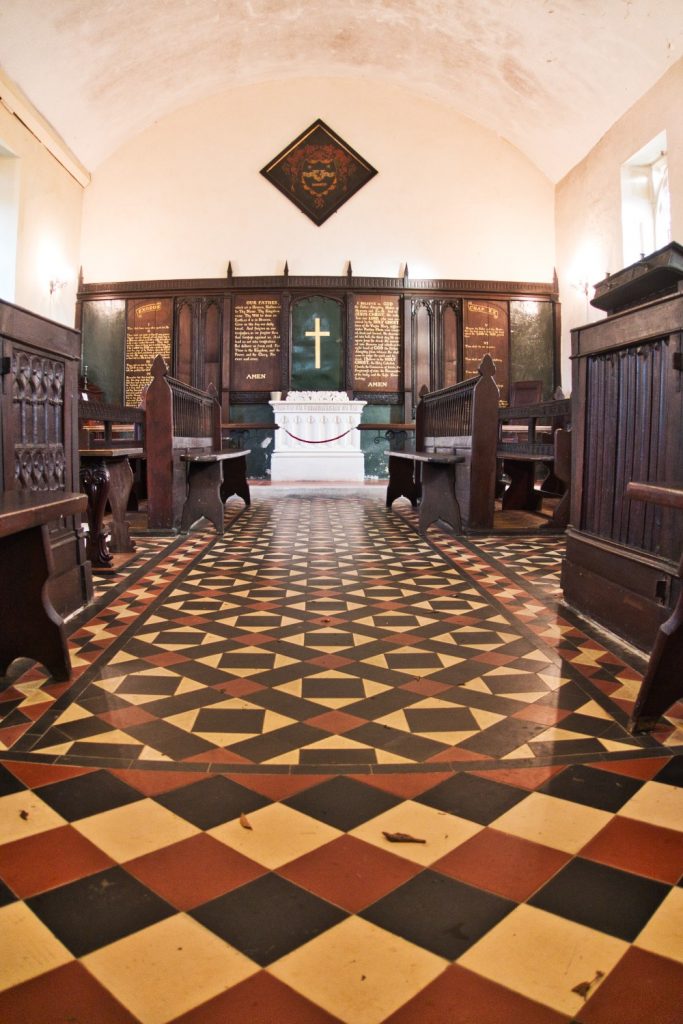
Wolford Chapel’s interior was transformed by Elizabeth Simcoe
John Graves Simcoe’s wife Elizabeth lived to be 87, and in her 44 years as a widow she renovated Wolford Chapel adding touches such as Jacobean woodwork and new windows, as well as building and renovating a further 3 local churches.
Elizabeth is also credited with leaving a legacy of diaries and watercolours from her time in Canada which have been invaluable for historians studying pioneer life.
Visiting Wolford Chapel
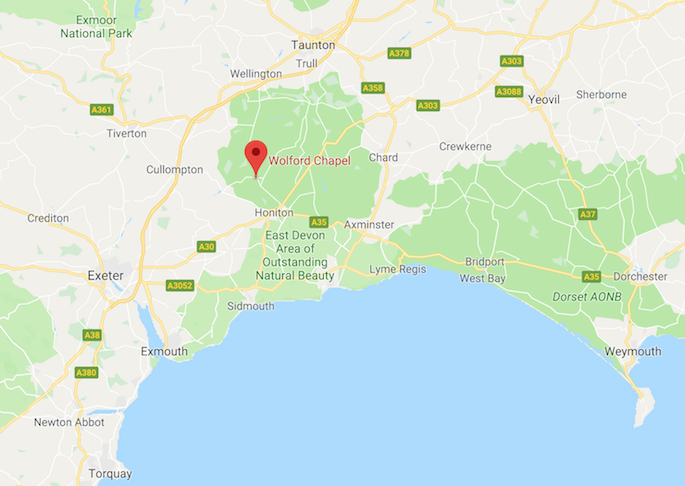
Map of Wolford Chapel location: John Graves Simcoe’s burial site
Signposts to the chapel can be hard to spot, but a small Maple Leaf can be seen on road signs on the A30, which is the main route through Devon to and from Cornwall.
Once off the A30 you can take A373 or the more picturesque Langford Road, though this is a very hilly and narrow lane.
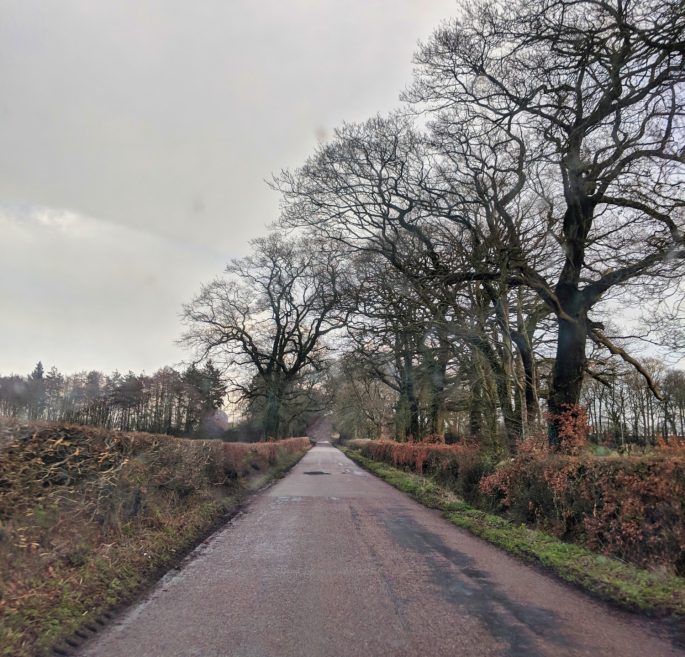
Driving to Wolford Chapel
Wolford Chapel is free to enter, and there is a small area to park in front of the chapel.
PIN THIS TO SAVE FOR LATER
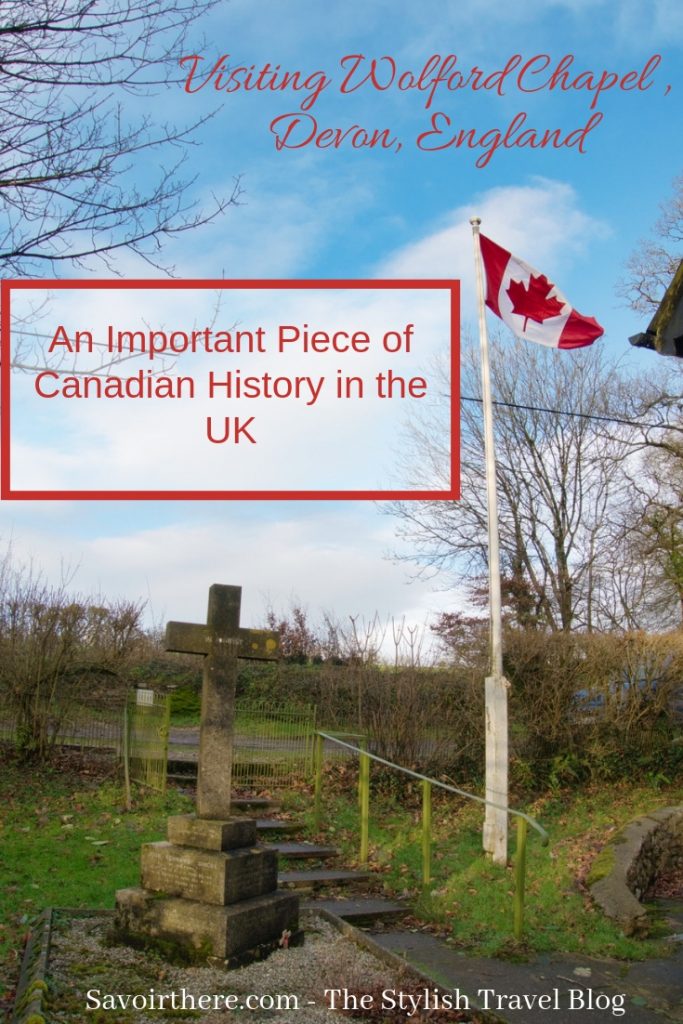
Wolford Chapel: Important Canadian History Site in England
Trackback from your site.




